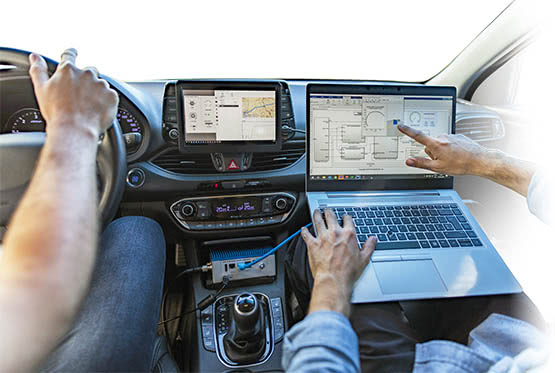Introduction
Development has been a main thrust in the car business since its origin. Today, as the business faces uncommon difficulties and open doors, fast prototyping has arisen as a vital instrument for speeding up development. In this article, we’ll investigate the job of fast prototyping in the car area, its advantages, applications, and the way things are forming the fate of auto plan and assembling.
The Need for Speed in Automotive Innovation
The Challenge of Traditional Prototyping
Customarily, the improvement of another vehicle model could require years and cost huge number of dollars. Prototyping involved the formation of actual models and the meticulous course of refining plans through various cycles. This approach was tedious as well as restricted the extent of advancement because of its sluggish speed and significant expenses.
Rapid Prototyping: A Paradigm Shift
Quick prototyping, frequently alluded to as 3D printing, has altered the auto business by fundamentally diminishing the time and cost expected to create and refine vehicle plans. It includes the utilization of PC helped plan (computer aided design) programming and 3D printing innovation to deliver actual models of vehicle parts and gatherings rapidly.
Benefits of Rapid Prototyping in Automotive
Rapid Iteration and Design Refinement
One of the essential benefits of vehicle part fabricating is the capacity to quickly emphasize and refine plans. Specialists and fashioners can rapidly make and test numerous car part manufacturing cycles of a part or framework, making ongoing changes and enhancements. This accelerated feedback loop leads to more innovative and efficient designs.
Cost Savings
By decreasing the requirement for costly shape and tooling, fast prototyping can essentially bring down advancement costs. This cost-viability permits automakers to investigate a more extensive scope of plan choices without breaking the financial plan.
Reduced Time to Market
Speed is of the pith in the car business. Quick prototyping abbreviates the time it takes to carry another vehicle from idea to creation. This not just permits automakers to answer all the more rapidly to changing business sector requests yet in addition gives them an upper hand.
Customization and Personalization
As consumer preferences for customized vehicles grow, rapid prototyping enables automakers to offer personalized options. Customized components, from interior features to unique exteriors, can be easily designed and produced to cater to individual customer preferences.
Applications of Rapid Prototyping in Automotive
1. Concept Cars and Prototypes
Rapid prototyping is instrumental in the creation of concept cars and prototypes that showcase cutting-edge design and technology. These concept vehicles serve as a glimpse into the future and allow automakers to gather valuable feedback from stakeholders and the public.
2. Functional Prototypes
Functional prototypes are used to test the performance of vehicle components, such as engines, suspension systems, and braking systems. Rapid prototyping enables engineers to evaluate and refine these critical components quickly.
3. Interior Design and Customization
The interior of a vehicle is a key factor in customer satisfaction. Rapid prototyping allows designers to create and test interior components, from dashboard layouts to personalized upholstery, ensuring an optimal user experience.
4. Tooling and Jigs
Rapid prototyping is also employed in the creation of specialized tooling and jigs used in the manufacturing process. These tools help ensure precision and accuracy during assembly and reduce production costs.
The Future of Automotive Innovation with Rapid Prototyping
1. Lightweight Materials and Fuel Efficiency
Chasing more prominent eco-friendliness and diminished outflows, automakers are investigating lightweight materials like carbon fiber and progressed amalgams. Fast prototyping takes into account the speedy creation and testing of lightweight parts that can fundamentally further develop eco-friendliness.
2. Electrification and Battery Technology
The shift towards electric vehicles (EVs) requires creative ways to deal with battery plan and incorporation. Fast prototyping works with the improvement of lightweight and effective battery packs, charging parts, and warm administration frameworks.
3. Autonomous Vehicles and Sensor Integration
Autonomous vehicles rely heavily on advanced sensors and perception systems. Rapid prototyping enables the swift testing and integration of sensor arrays, lidar, radar, and camera systems, accelerating the development of autonomous technology.
4. Sustainable Manufacturing
Supportability is a developing worry in the auto business. Quick prototyping takes into consideration the investigation of maintainable materials and creation strategies, lessening the natural effect of vehicle producing.
Conclusion
Quick prototyping has turned into a main impetus in the car business, changing how vehicles are planned, created, and fabricated. Its capacity to speed up the development cycle, decrease costs, and tweak vehicles to meet purchaser inclinations is reshaping the scene of the auto area.
As automakers endeavor to make more eco-friendly, electric, and independent vehicles, fast prototyping will keep on assuming a vital part in putting up these developments for sale to the public rapidly and productively. The auto business’ obligation to embracing fast prototyping guarantees that we can anticipate a future of more secure, more manageable, and exceptionally tweaked vehicles that meet the developing necessities and wants of purchasers around the world.










